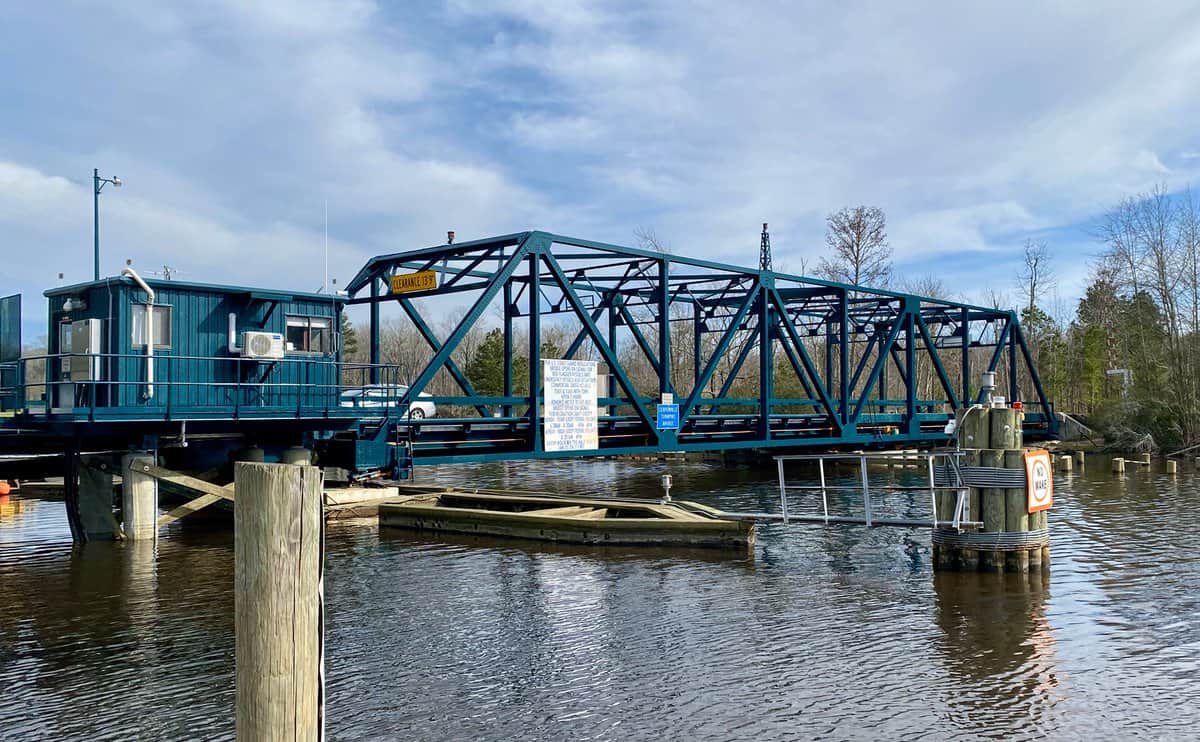A controversial proposal to build a second golf course at Navy-owned Greenbury Point may be finished—thanks to a provision in a defense policy bill added by members of Congress from Maryland.
This week, the National Defense Authorization Act (NDAA) passed both the U.S. Senate and the House of Representatives. The $886 billion defense bill now goes to President Biden’s desk. Included in the NDAA was language introduced by Senator Chris Van Hollen, Senator Ben Cardin and Representative John Sarbanes protecting public access at the 231-acre Greenbury Point Conservation Area in Anne Arundel County.
The site, a stunning peninsula with views of the Severn River and the Chesapeake Bay beyond it, is owned by the Navy and managed by Naval Support Activity (NSA) Annapolis. It was under threat of being developed for the purposes of a second Naval Academy golf course, leading to a backlash of protest and an explosion of grassroots organizing by neighbors, nature lovers and conservationists.
“For years, Annapolis residents and visitors have cherished the opportunity to explore Greenbury Point—one of the few publicly accessible areas of the Bay. As the Navy has considered altering that access, our constituents expressed their strong opposition to changing that policy. That’s why we fought for this provision that says in no uncertain terms – Greenbury Point must stay open to the public,” said Van Hollen.
Joel Dunn, president and CEO of the Chesapeake Conservancy, praised the bill’s passage. “Sen. Van Hollen, Sen. Cardin, and Rep. Sarbanes…took a stand for our trees and wildlife to protect the health of the Chesapeake Bay and to ensure that everyone, not just the privileged few, will have access to one of the last remaining natural areas of the Severn River.”
The conservation area remained open to the public even as rumors swirled about possible development plans over the past 18 months. “We do not anticipate any changes in the way we operate since we currently allow public access when we can do it safely,” wrote Madelyn Flayler of the NSA Annapolis public affairs office.
Greenbury Point’s three miles of trails and iconic radio towers have inspired nature lovers, boaters, hikers, photographers, dog walkers and runners for years. When the golf course plans were first revealed, outraged citizens launched an organization called Save Greenbury Point to drum up public support, share updates and rally local and state leaders to fight the move. In May, a new RV park was being discussed for another area on Greenbury Point.
“We will be popping the cork on a bottle of Dom Perignon soon,” said Sue Steinbrook, one of the leaders of the grassroots group, upon hearing of the bill’s passage. “This is really good news and needed to happen. This truly was a community effort.”
The bill now states a “limitation on authority to modify or restrict public access to Greenbury Point.” The only exceptions to access will be when the area is closed due to Naval Academy live fire exercises, hazardous conditions, maintenance, and emergent situations. It also states that a lease or transfer of the area to another public entity qualifies as an exception.
For now, there are no plans for new ownership of the property. “NSA Annapolis is not considering any sole source lease proposals for Greenbury Point at this time,” writes NSA spokesperson Flayler. “NSA Annapolis is always evaluating the status and future of Greenbury Point in support of the mission of both the installation and the U.S. Naval Academy.
The Severn River Association’s executive director, Jesse Iliff, praised the bill’s provisions. “There is more work to be done to ensure these provisions are not side-stepped or misapplied, but we are delighted by this result, and applaud our federal delegation for their staunch protection of the Severn River and the Chesapeake Bay,” he said in a statement.
“Preserving Greenbury Point balances the needs of the Navy with the needs of the community,” said Cardin. “Its proximity to the Chesapeake Bay makes it an important place for outdoor recreation and conservation in the region. Ensuring public access and preventing further development will allow Greenbury Point to continue to be a model of coastal stewardship for the Chesapeake Bay.”




